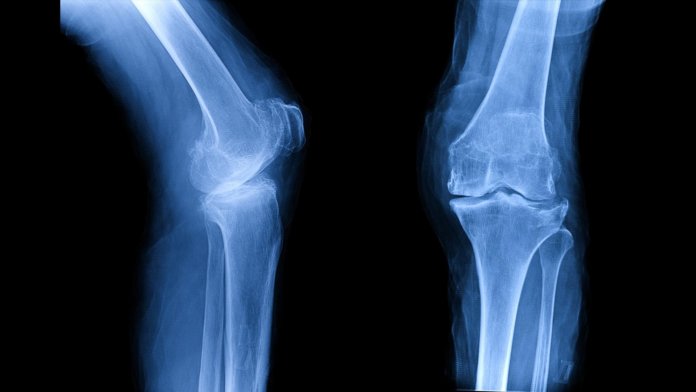The human body has always been an incredible machine, from the grand feats of strength and athleticism it can accomplish down to the fine details of each vein, nerve, and cell. But the way we think about the body has changed over time, as has our level of understanding of it.
In Nina Tandon’s view, there have been two different phases of knowledge here. “For so much of human history, medicine was about letting the body come to rest, because there was an assumed proportionality attributed to the body,” she said.
Then, around the turn of the last century, we started developing interchangeable parts (whether from donors, or made of plastic or metal), and thinking of our bodies a bit more like machines. “We’re each made out of 206 bones held together by 360 joints,” Tandon said. “But many of us are more than that. By the time we go through this lifetime, 70 percent of us will be living with parts of our body that we weren’t born with.”
If that percentage seems high—it did to me—consider all the things that count as ‘parts’ of our bodies that are artificial: Dental implants. Pacemakers. IUDs. Joint replacements.
Now, though, we’re moving into a third phase of bodily knowledge. “We are an ecosystem of cellular beings, trillions of cells,” Tandon said. “We finally realized that man is a modular system, and cells are the pixels in this world.”
Tandon is co-founder and CEO of EpiBone, a company working on custom-growing bones using patients’ own stem cells. In a talk at Singularity University’s Exponential Medicine in San Diego this week, Tandon shared some of her company’s work and her insights into regenerative medicine, a field with tremendous promise for improving human well-being.

What sets the third phase of knowledge apart from the second phase is that we’re learning how to fix and rebuild our own bodies using, well, our own bodies. Some examples include CAR-T therapies, which fight cancer using a patient’s own cells; regenerative medicine, which uses stem cells to repair body parts or make new ones; and microbiome analyses, which use our gut bacteria to fashion personalized dietary treatments.
Tandon’s expertise, though, is in personalized bones (not a term you ever thought you’d hear, is it?). “Bone is the most transplanted human tissue after blood,” she said. “And we’re replacing over a million joints every year in this country alone, just because of a couple millimeters of damaged cartilage. Welcome to the hundred-billion-dollar medical device industry.”
Epibone is working on doing it better. Here are some details of their method.
First, patients undergo a CT scan to determine the size and shape of the bone they need. Stem cells are extracted from the adipose (fatty) tissue in the abdomen. A scaffold model of the bone is created, as is a custom bioreactor to grow the bone in, while the extracted stem cells are prodded to differentiate into osteoblasts (bone cells).
When they’re ready, the stem cells are infused into the bone scaffold, and a personalized bone graft grows in the bioreactor in just three weeks. When the new bone is implanted into the patient’s body, the surrounding tissue seamlessly integrates with it; the custom size and shape ensure it will fit, there’s no risk of rejection since it contains the patient’s own cells, and since it’s made of living tissue, it’s likely to require far less revision than other types of implants.
Epibone is hoping to start human clinical trials next year, and it’s in good company; Tandon mentioned several concurrent projects in regenerative medicine that show we’ve truly entered the “biofabrication age,” as she put it.
Humacyte is working on bioengineered acellular vessels, and is currently in phase three clinical trials. Emulate Bio miniaturizes organoids on tissue chips. CollPlant has engineered tobacco plants to produce recombinant human collagen. Ecovative uses mushrooms to engineer sustainable advanced materials. BioMASON created a concrete that self-heals its cracks using water-activated bacteria.
“Cellular therapies can also involve using bugs as drugs,” Tandon said. “Imagine a probiotic yogurt being a kind of diagnostic device in the future using these little micro machines called bacteria.” To that end, Sangeeta Bhatia’s lab at MIT has engineered bacteria to glow green in the presence of colon cancer cells.
The list goes on—companies are building tools so wild that many still sound like science fiction.
As they continue to advance, Tandon noted, we must always consider the ethics behind these technologies and how we’re using them, and the conversations need to go beyond hot-button issues like designer babies or body modification.
“Are the modalities of government grant funding, angel funding, and VC really incentivizing us to develop the technologies that we want to see?” she asked. Access to biotech tools and treatments is an ethical consideration as well; scale and cost control must be foremost in biotech developers’ minds, so as not to end up with solutions for only the wealthy and privileged.
Regenerative medicine will certainly pose challenges, but its possibilities are vast and exciting.
In closing, Tandon asked the audience to envision a future where all the extra parts our bodies need “…are made not out of metal, not out of ceramic, not out of parts carved from other peoples’ bodies—but made out of ourselves.”
Image Credit: ChooChin / Shutterstock.com



